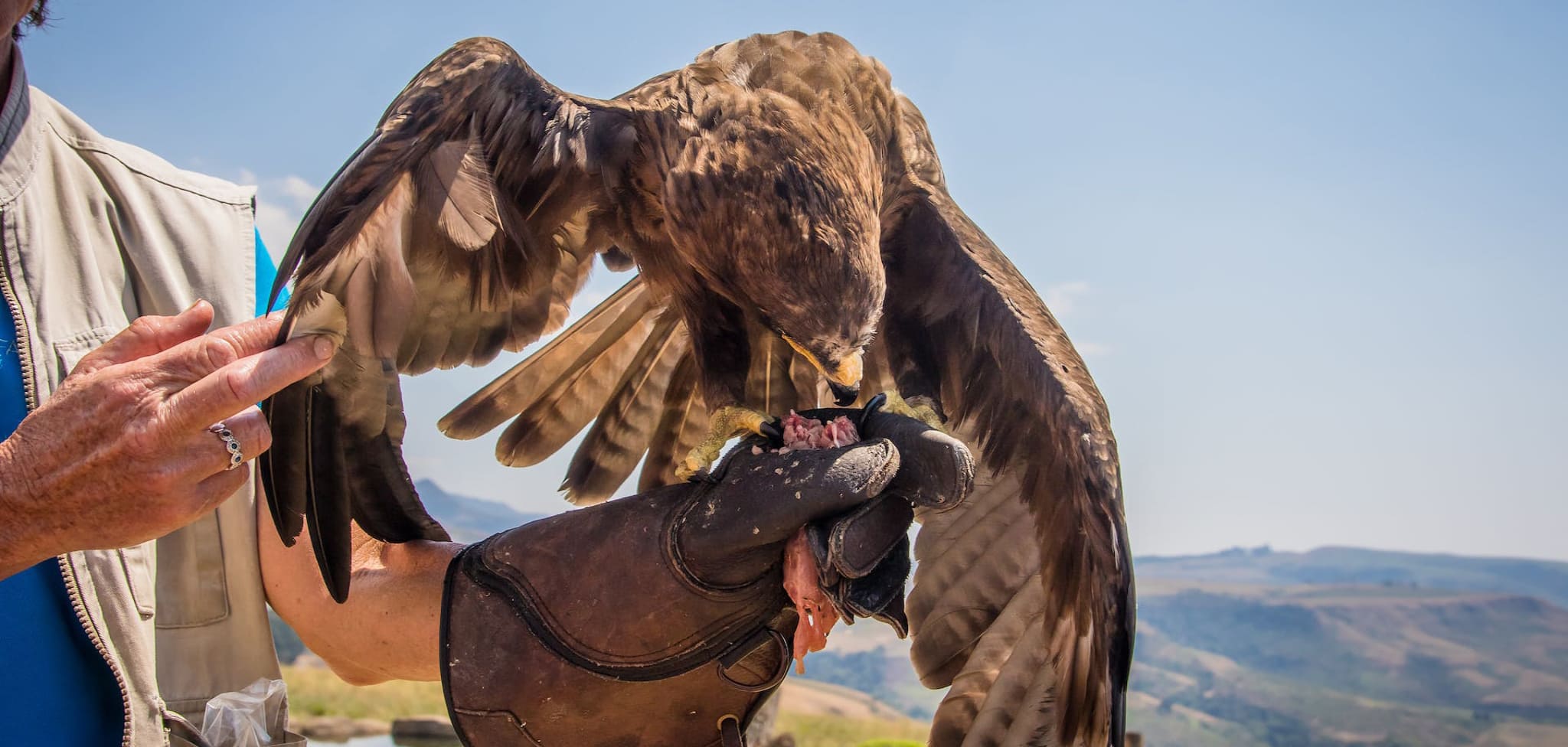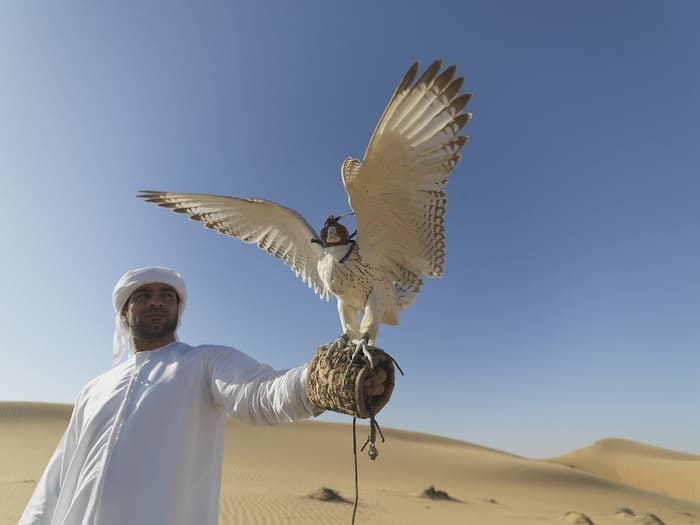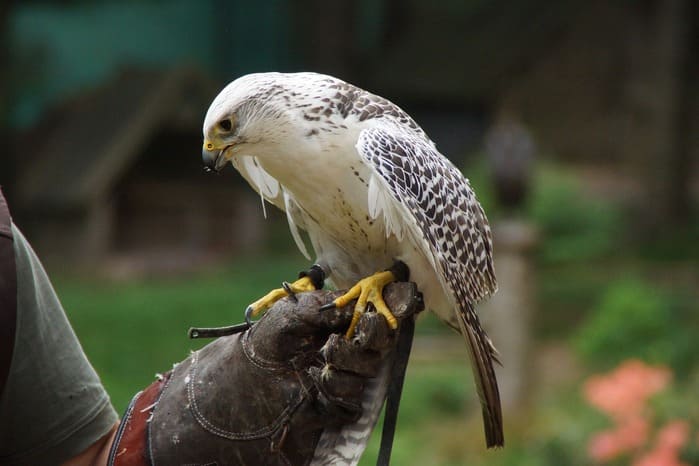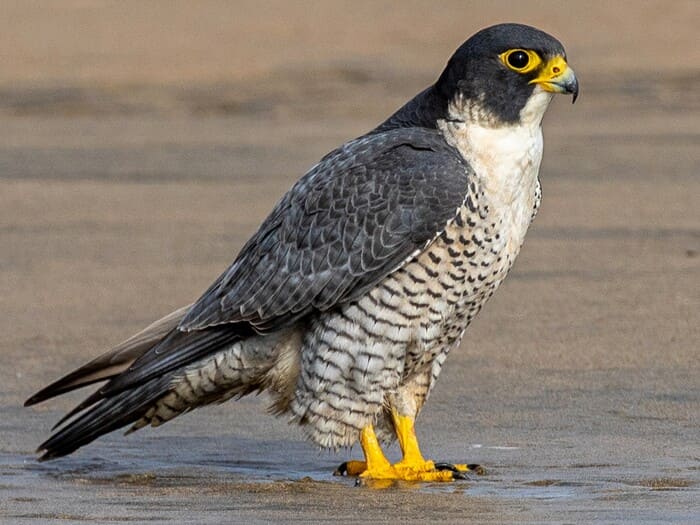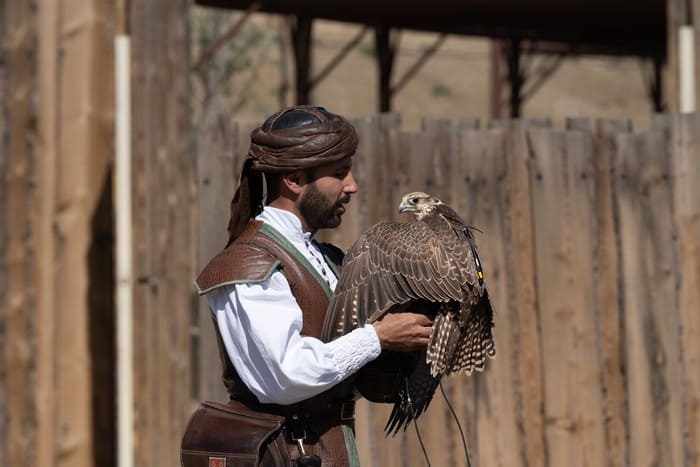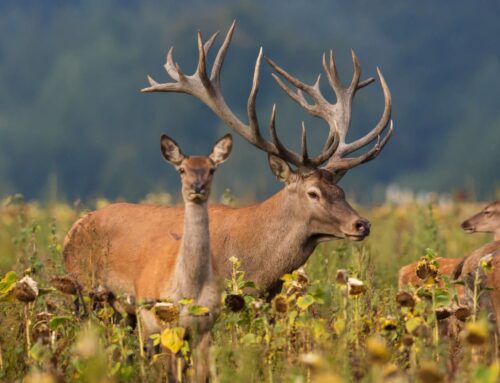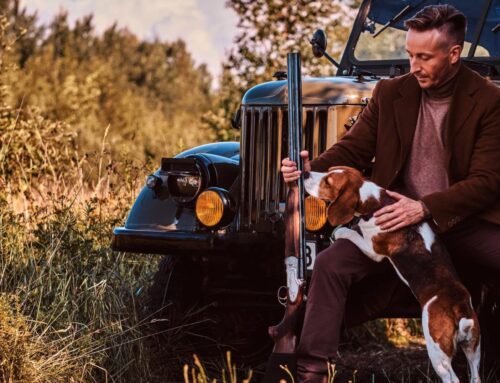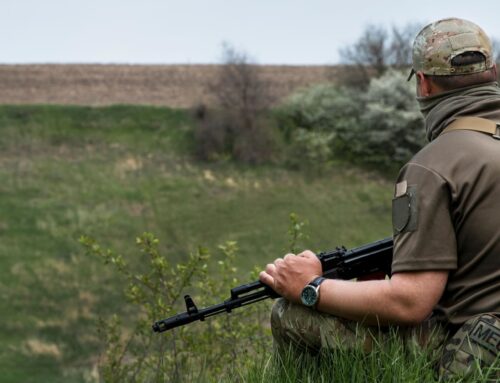History of Hunting Falconry: An Overview of Falconry’s Evolution and Significance
Are you interested in learning about the ancient practice of hunting with trained birds of prey? Falconry has been practiced for thousands of years and has a rich history that spans continents and cultures. Falconry requires specialized equipment and extensive training for both the falconer and the falcon.
Falconry hunting is the practice of using trained birds of prey to capture game for sport or food. The birds used in falconry are typically falcons, hawks, or eagles, and they are trained to hunt small game such as rabbits, squirrels, and birds. Falconry is not only a sport but also a way of life, requiring a deep understanding and respect for nature and the birds themselves. If you’re interested in learning more about this ancient practice, read on to discover the history, techniques, and equipment used in Hunting Falconry.
History of Falconry
Falconry, also known as hawking, is an ancient sport that involves hunting with a trained bird of prey. The history of falconry can be traced back to ancient times, and it has been practiced in many parts of the world for centuries.
Ancient Origins
The origins of falconry are believed to date back to the 3rd millennium BCE in Mesopotamia. It was later adopted by the Mongols and spread to Europe and the Middle East. At that time, falconry was primarily used for hunting and gathering food, but it later evolved into a status symbol and a form of entertainment for royalty and nobility.
Medieval Expansion
During the Middle Ages, falconry became more widespread, and it was practiced by people from all social classes. It was particularly popular among the aristocracy, who would often hold elaborate hunting parties that involved dozens of birds of prey. The birds were trained to hunt a variety of game, including hares, rabbits, and even deer.
Modern Developments
In the modern era, falconry has become less common as a hunting practice, but it remains a popular sport and hobby. Today, falconry is regulated in many countries to ensure that the birds are treated humanely and that they are not taken from the wild. Many falconers breed their own birds and train them from a young age, creating a strong bond between bird and human.
Overall, the history of falconry is a fascinating one that spans thousands of years and has been practiced by people from all walks of life. Whether you are a seasoned falconer or a newcomer to the sport, there is much to learn and appreciate about this ancient and noble tradition.
Falconry Equipment
Falconry equipment has evolved over time to suit the needs of the sport. The equipment used in falconry is essential to the safety, comfort, and effectiveness of the birds and the falconer. Here are some of the most important pieces of equipment used in falconry:
Hoods and Bells
Hoods, made of leather, are used to cover the bird’s eyes to keep them calm and prevent them from seeing distractions. The hood is custom-made to fit the bird’s head and is secured with a lace or a button to keep it in place. Bells are attached to the bird’s legs to help the falconer locate the bird when it is in flight. The bell also serves to scare off other birds that might try to attack the falcon.
Gloves and Perches
Gloves are used to protect the falconer’s hands from the bird’s sharp talons. The glove is made of leather and is custom-made to fit the falconer’s hand. The perch is used to hold the bird when it is not flying. The perch is made of wood or metal and is designed to hold the bird securely. The perch is also used to train the bird to fly to the falconer’s hand.
In addition to these essential items, falconers also use jesses, swivels, and leashes to control the bird’s movements. Jesses are leather straps that are attached to the bird’s legs and used to control its movements. Swivels are used to prevent the jesses from getting tangled, and leashes are used to keep the bird from flying away.
Overall, falconry equipment is essential to the success of the sport. The equipment used in falconry is designed to keep the birds safe, comfortable, and effective.
Training Methods
In the early days of falconry, birds were captured from the wild and trained through a process called “manning.” This involved keeping the bird in a darkened room for several days until it became accustomed to its handler. The bird was then gradually introduced to the outdoors and trained to fly to the handler’s glove.
The training methods in falconry have evolved over time, and modern falconers often employ positive reinforcement techniques to train captive-bred birds. Here are some common training methods used in falconry:
Positive Reinforcement:
Food Rewards: This is a prevalent technique where the falconer rewards the bird with food for displaying desired behaviors. This reinforces the association between the behavior and a positive outcome.
Impingement: Involves attaching feathers from a bird’s prey to the lure, providing a visual and olfactory cue for the bird. When the bird successfully catches the lure, it is rewarded with food.
Man-Hunting:
Training in Pairs: Some falconers use a well-trained bird (usually an older, experienced bird) to help train a younger or less-experienced bird. The younger bird observes and learns from the actions of the older bird.
Flying to Lure:
Basic Training: The falconer uses a lure (a piece of meat or a feathered toy) to encourage the bird to fly to a specific location. This helps in building a strong recall response and establishes a connection between the bird and the handler.
Hunting Simulation: Once the bird is proficient in flying to the lure, the falconer can use it to simulate hunting scenarios. This helps prepare the bird for actual hunting situations.
Creance Training:
Tethered Training: Falconers may use a long line called a creance to keep the bird tethered during initial training sessions. This allows controlled flight and recall exercises before the bird is allowed free flight.
Bating and Awaiting Quarry: Falconers may sometimes use the “bating” technique, where the bird is encouraged to fly to a high perch and is secured with a leash. The falconer then waits for suitable prey to be flushed, at which point the bird is released to pursue it.
Hood Training:
Hooding: Falcons are often trained to wear a hood, a covering that fits over their eyes. This helps in calming the bird and reducing stress during transportation or when not actively hunting.
Telemetry Training:
Transmitter Use: Some falconers use telemetry equipment to track their birds during free flight. Training involves acclimating the bird to wear a small transmitter, allowing the falconer to locate the bird if it flies out of sight.
Socialization and Trust Building:
Time and Patience: Building trust and a strong bond between the falconer and the bird is crucial. Spending time together, handling the bird gently, and providing positive interactions contribute to successful training.
Hunting Techniques
Wait-on (Waiting On):
The wait-on technique in falconry is a patient and strategic approach to hunting. Falcons are released and allowed to gain altitude, circling above as the falconer keenly observes the surroundings. This method is particularly effective for hunting birds in flight. The falconer carefully watches for potential prey and, upon spotting a suitable target, signals the bird to execute a rapid descent known as a stoop.
Walk-up or Stalking:
The walk-up or stalking technique involves a more direct and terrestrial approach to hunting. The falconer, along with the bird, traverses the terrain on foot. The falconer flushes out prey, creating an opportunity for the bird to be released and pursue the target. This technique is versatile and suitable for various landscapes, allowing falconers to adapt to different hunting environments. The seamless communication and understanding between the falconer and the bird ensure a successful execution of the stalking technique, highlighting the deep bond forged through training and shared experiences.
Rising (or Ringing):
is a variation of the wait-on technique where the falconer strategically positions themselves on higher ground. This provides the bird with an advantageous vantage point when scanning for prey. Once prey is identified, the falcon is released to stoop and capture it.
Foot or Ground Game Hawking:
Ground game hawking involves hunting on foot, where the bird pursues prey on the ground. This method is commonly used for hunting mammals or terrestrial birds, showcasing a different aspect of falconry focused on ground-level pursuits. Both the falconer and the bird need to possess endurance for ground-level pursuits, making this technique physically demanding.
flushing:
This technique involves using dogs or other animals to flush out prey from hiding places, creating an opportunity for the bird to catch it. The collaboration between the falconer and the assisting animals, often dogs, is crucial in this method. The dogs work to locate and startle the prey, causing it to leave its concealed position. As the prey takes flight or runs, the falcon is released by the falconer to pursue and capture it. Flushing is particularly effective in areas with dense vegetation or when hunting ground-dwelling prey that may not be easily visible to the bird from a distance.
In summary, falconry encompasses a range of hunting techniques, each with its own intricacies and considerations. The success of these techniques depends on the collaboration and understanding between the falconer and the bird, as well as their ability to adapt to diverse hunting scenarios.
Birds of Prey in Falconry
The birds used in falconry are known as raptors or birds of prey. These birds have keen eyesight, powerful talons, and strong beaks that make them excellent hunters. In this section, we will discuss the different birds of prey used in falconry and their characteristics.
Choosing a Bird
When choosing a bird for falconry, it is important to consider your level of experience and the type of hunting you plan to do. Some birds are easier to train than others, and some are better suited for certain types of hunting. Before selecting a bird, it is important to do your research and consult with an experienced falconer.
Species and Characteristics
Indeed, falconry involves a variety of birds of prey, each with its own unique characteristics and suitability for different aspects of the sport. Here’s a brief overview of some commonly used birds in falconry:
- Red-tailed Hawk (Buteo jamaicensis):
- One of the most popular birds for beginners.
- Adaptable and found in a wide range of habitats.
- Known for their broad wings and distinctive red tail feathers.
- Harris’s Hawk (Parabuteo unicinctus):
- Social birds that can be flown in groups known as casts.
- Excellent hunters and cooperative in nature.
- Native to the southwestern United States, South America, and Mexico.
- Peregrine Falcon (Falco peregrinus):
- One of the fastest birds in the world, known for its incredible speed during dives.
- Commonly used for falconry in open country or during the pursuit of birds in flight.
- American Kestrel (Falco sparverius):
- The smallest falcon in North America.
- Suitable for beginners due to its size and adaptability.
- Often used for hunting small birds and insects.
- Lanner Falcon (Falco biarmicus):
- Medium-sized falcon with a slender build.
- Known for its speed and agility, suitable for hunting medium-sized game.
- Goshawk (Accipiter gentilis):
- Powerful and aggressive hunters.
- Require experienced handlers due to their strong personalities.
- Used for hunting in densely wooded areas.
- Merlin (Falco columbarius):
- Small and agile falcon.
- Known for its rapid flight and versatility in hunting various prey.
- Aplomado Falcon (Falco femoralis):
- Slender and long-winged falcon.
- Native to the Americas and used for hunting birds and small mammals.
- Prairie Falcon (Falco mexicanus):
- Native to western North America.
- Known for hunting birds in open areas, such as prairies and deserts.
Before deciding on a bird, prospective falconers must consider their own experience level, the intended type of hunting, and local regulations. Additionally, building a strong bond with the bird through training and care is crucial for a successful falconry partnership. It’s also essential to abide by laws and regulations related to falconry in your region.
Legal and Ethical Considerations
When it comes to hunting with falcons, there are several legal and ethical considerations that you need to take into account. In this section, we will discuss the regulations and permits required for falconry, animal welfare concerns, and the cultural significance of the practice.
Regulations and Permits
Falconry is a highly regulated sport, and permits are required in most countries to engage in this practice. In the United States, for example, you need to obtain a falconry permit from the U.S. Fish and Wildlife Service before you can hunt with a bird of prey. The permit requires you to pass a written exam, have a sponsor, and demonstrate your knowledge of the sport.
In addition to obtaining a permit, falconers must adhere to strict regulations regarding the capture, transport, and care of their birds. These regulations are in place to protect the birds and ensure that they are not taken from the wild illegally.
Animal Welfare
Animal welfare is a major concern when it comes to hunting with falcons. While falconry can be a humane practice, it is important to ensure that the birds are well-cared for and not subjected to unnecessary harm. Falconers must provide their birds with adequate food, water, and shelter, and must take steps to prevent injury or illness.
It is also important to note that falconry is not suitable for all birds of prey. Some species are not well-suited to captivity and may suffer from stress or other health problems as a result. As such, it is important to choose the right bird for the job and to ensure that it is well-suited to the practice of falconry.
Cultural Significance
Falconry has a long and rich history and is deeply ingrained in the cultures of many countries around the world. In some cultures, falconry is considered an art form, while in others it is a way of life. As such, it is important to respect the cultural significance of falconry and to engage in the practice in a way that is respectful and responsible.
Heritage and Traditions
Falconry has been an important part of many cultures’ heritage and traditions. For example, in the Middle East, falconry has been practiced for thousands of years and is considered a symbol of wealth and power. In Europe, falconry was popular among the nobility during the Middle Ages and was often associated with chivalry.
In Japan, falconry was introduced in the 8th century and became popular among the samurai. It was considered a way to develop discipline, patience, and focus. Today, falconry is still practiced in Japan and is considered an important cultural tradition.
In Mongolia, falconry has been practiced for over 6,000 years and is an important part of the nomadic way of life. The Kazakhs of Central Asia also have a long tradition of falconry and hold an annual festival to celebrate their heritage.
Overall, falconry has left a lasting impact on many cultures and continues to be an important part of their heritage and traditions.
Literature and Art
Falconry was a popular subject in literature and art during the Renaissance. Many famous artists, such as Leonardo da Vinci, included falcons and hawks in their paintings. Literature also featured falconry, with many books and poems dedicated to the sport. One notable example is the book “The Book of St. Albans,” which was published in 1486 and included a section on falconry.
Language and Idioms
Falconry has influenced language and idioms in many cultures. For instance, in English, idioms such as “fed up” and “under someone’s thumb” have their origins in falconry. “Fed up” refers to a hawk that has eaten enough and is no longer interested in hunting. “Under someone’s thumb” refers to a hawk that is obedient to its handler’s commands.
In Arabic, the word for falcon, “saqr,” is often used to refer to someone who is brave and strong. In Chinese, the word for falcon, “yòu,” is often used to describe someone who is sharp and quick-witted.
UNESCO Recognition
Falconry has been recognized by UNESCO as an intangible cultural heritage of humanity. UNESCO recognized falconry as a living human heritage in 2010 and added it to the Representative List of the Intangible Cultural Heritage of Humanity. The recognition was given because falconry is not only a traditional practice but also a way of life that is closely linked to the environment, culture, and history of many countries.
Traditional Celebrations
Falconry is celebrated in many countries around the world, especially in the Middle East and Central Asia. In these regions, falconry is not only a sport but also a part of their cultural heritage. Traditional celebrations such as the International Festival of Falconry in Abu Dhabi, the Saluki and Falconry Festival in Bishkek, and the Golden Eagle Festival in Mongolia, are held to showcase the art of falconry.
Falconry Today
Falconry, the ancient sport of training birds of prey to hunt game, has survived into the modern era. Today, falconry is practiced around the world and has a variety of uses beyond just hunting. In this section, we will explore some of the ways in which falconry is used today.
Sports and Clubs
Falconry is still a popular sport, and many clubs and organizations exist to promote the practice. These groups offer a way for falconers to connect with each other, share knowledge, and participate in competitions. Some of the most prestigious falconry events in the world include the British Falconry Fair, the Abu Dhabi International Hunting and Equestrian Exhibition, and the Saudi Falconry Festival.
Educational Uses
Falconry is also used in education and conservation efforts. Many schools and universities offer courses on falconry, and some even have dedicated falconry programs. Falconry can be used to teach students about biology, ecology, and conservation. In addition, falconry is sometimes used as a tool for wildlife management, as trained birds of prey can be used to control pest populations.
Falconry as a Profession
Finally, falconry can also be a profession. Some falconers work in the entertainment industry, training birds of prey for movies and television shows. Others work in pest control, using trained birds to control rodent and pest populations. Some falconers also work in wildlife rehabilitation, helping injured birds of prey recover and return to the wild.
In conclusion, falconry is a fascinating and complex practice that has endured for thousands of years. Today, falconry is used in a variety of ways, from sport to education to pest control. Whether you are a seasoned falconer or just starting out, there is always more to learn about this ancient art.
Frequently Asked Questions
What are the origins of falconry and where did it first begin?
Falconry has a rich history dating back thousands of years, with origins in Asia and the Middle East. It is believed that the practice of using trained birds of prey for hunting game began in ancient Mesopotamia, around 4000 BC. From there, it spread to other parts of the world, including Europe, Africa, and Asia.
What types of birds are commonly used in falconry?
Several bird species are commonly used in falconry, including:
- Goshawk
- Red-tailed Hawk
- Harris’s Hawk
- Peregrine Falcon
- Cooper’s Hawk
- American Kestrel
It’s important to note that different species have different temperaments, so your choice should reflect your level of experience and hunting targets.
How can one legally purchase a bird for falconry?
To legally purchase a bird for falconry, you must first become a licensed falconer. Once you have obtained your license, you can purchase a bird from a licensed breeder or capture a wild bird under permit.
What are the best practices for hunting with falcons?
When hunting with falcons, it’s important to follow these best practices:
- Always hunt in a safe and ethical manner
- Use properly trained birds
- Hunt only legal game species
- Respect the environment and other hunters
- Follow all state and federal regulations
What equipment is essential for engaging in falconry?
Essential equipment for falconry includes:
- A mews or housing for the bird
- Perches
- Jesses and anklets
- A hood
- Bells
- A telemetry system
- A scale
- A lure
LEARN & GROW CORNER
Baseball for Beginners
Baseball for Beginners: A Comprehensive Guide to the Basics Baseball is one of the most popular sports in the United States, enjoyed by millions of people of all ages. It's a game that requires [...]
Collecting Paper Currency
Collecting Paper Currency Hobby: Tips and Tricks for Building a Unique Collection Are you interested in the world of paper currency collecting? If so, you're in for a treat. Collecting paper money is a [...]
Coin Collecting Hobby
Coin Collecting Hobby: A Guide to Starting Your Collection If you've ever found yourself fascinated by the intricate designs and historical significance of coins, you might want to consider starting a coin collecting hobby. [...]
The Stamp Collecting
The Stamp Collecting: A Comprehensive Guide Stamp collecting is a fascinating hobby that has been enjoyed by people all over the world for over a century. Whether you're a seasoned collector or a newcomer [...]
ABC Gardening Hobby
ABC Gardening Hobby: Tips and Tricks for Beginners If you're looking for a rewarding and enjoyable hobby, gardening might be the perfect fit for you. A B C Gardening is a beginner-friendly approach to [...]

